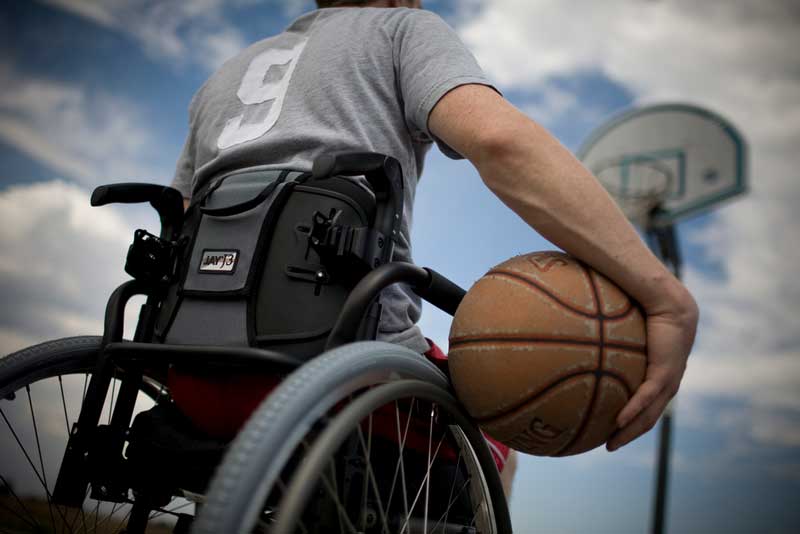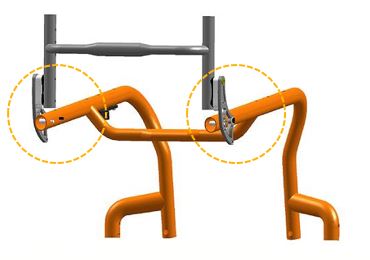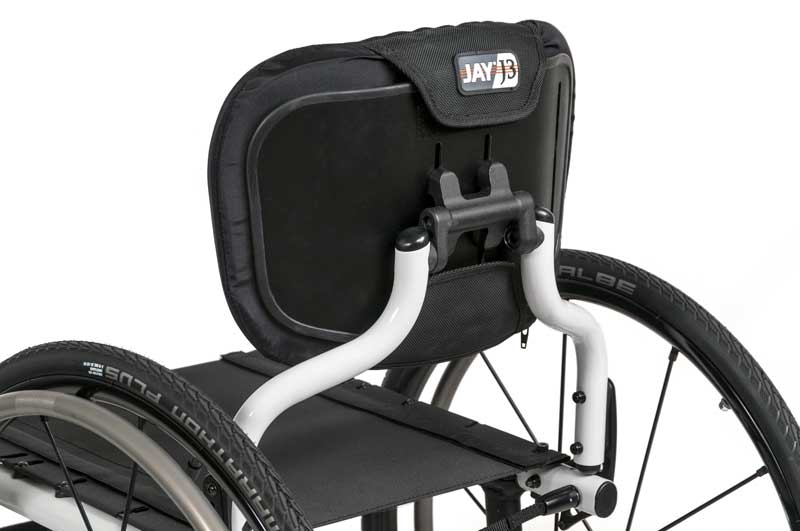A German inventor and watchmaker who was unable to walk, Stephen Farffler, is credited by various sources for inventing the first self-propelled wheelchair in 1655. Needless to say, self-propelled wheelchairs have evolved quite a bit since Farffler's device. During the 20th century a great deal of advances were made, including the development of the first portable wheelchair. Significant changes in the design were made to incorporate lightweight materials and the ability for manufacturers to truly modify a manual wheelchair exactly to a user's needs (dimensions, components, weight, configuration, etc.) and desires.
The term 'ultra lightweight wheelchair' is utilized to describe an entire category of manual wheelchairs. According to RESNA, in order to be considered an ultra lightweight wheelchair the device must be fully modifiable, as light as possible, able to sustain long-term continuous use, have a modifiable rear wheel & caster wheel location & configuration, and have a seating configuration that is modifiable to the user.
The two primary types or styles of ultra lightweight wheelchair frames are folding (x-frame folding cross brace) and rigid (box or open frame). Within the two overarching groups of ultra lightweight wheelchairs, there is a number of options available in each to lead toward the selection of the most appropriate wheelchair for a user. As a part of the complex rehabilitation technology (CRT) interdisciplinary team, it is important that you have an understanding of how these options could potentially impact a user's ability to propel his/her wheelchair in the most efficient and healthy way possible.
Let's take a closer look at three back frame options available on a rigid ultra lightweight wheelchair such as the QUICKIE® 7R.
Standard Dual Post Back System
The traditional style of back utilizes a dual cane system. This type of back has two posts that are either manufactured to be fully rigid or with the canes mounted with a bracket that allows the user to easily make quick back angle adjustments or fold it down for easier transport. Both hard shell backs such as the JAY J3®, and tension-adjustable upholstery style backs can be mounted on this style of frame. Push handles can easily be mounted to this back also.

Individuals who have utilized a rigid ultra lightweight wheelchair for a number of years very likely have the most experience using this style of back. With experience comes a certain amount of comfort and ease in terms of function with propulsion, stability, repositioning, etc.
Dual Post Back System with a 1" Inset

For some clients, a dual post back system may be preferred and appropriate for the reasons listed above. However, factors such as body type, size, or posture may require the team to consider other options. The dual post back system with a 1" inset option was initially designed at the request of clinicians from various seating clinics all over the country who were looking for a modification to accommodate clients with a larger hip width than trunk. By bringing the back posts in ½" on each side, it decouples the decision that needs to be made in terms of the seat and back widths. Users have also expressed this option has led to them getting a better range of motion when propelling.
Freestyle Back System

The final option for us to review in this article is the Freestyle Back System. This system is offered only on the QUICKIE® 7R and is compatible with the J3 Back. The unique design removes the need to have the two back posts, thus creating more room for the user to move his/her trunk and upper extremities in space. Individuals who have used the Freestyle Back System have reported experiences such as improved access to the rear wheel for better propulsion, ability to rotate and reach for items in the environment, and increased ability to engage in physical fitness activities, including stretching and weight training. In addition, the modern design is lower profile, thus allowing less of the wheelchair to be seen and more of the individual using it.
During the evaluation process it is essential to introduce the client to various types of equipment and provide the opportunity for the client to try as many as possible. Frame style and back systems are just the tip of the iceberg when it comes to determining the proper seating and wheeled mobility device for each client. Stay tuned to future Education in Motion blog posts and resources to learn more.
Thank you for reading our blog! We love hearing from you, so please do not hesitate to reach out to us. We encourage you to leave a comment below.
Always remember at the end of the day, your client is your number one priority!
- Angie
Follow Angie on Twitter @ATigerKiger
References
- DiGiovine, C., Rosen, L., Berner, T., Beltz, K., Roesler, T., & Schmeler, M. (2012). RENSA Position on the Application of ultralight manual wheelchairs. RESNA.
- Lange, M. L., & Minkel, J. (2018). Seating and wheeled mobility: A clinical resource guide. Thorofare, NJ: Slack Incorporated.